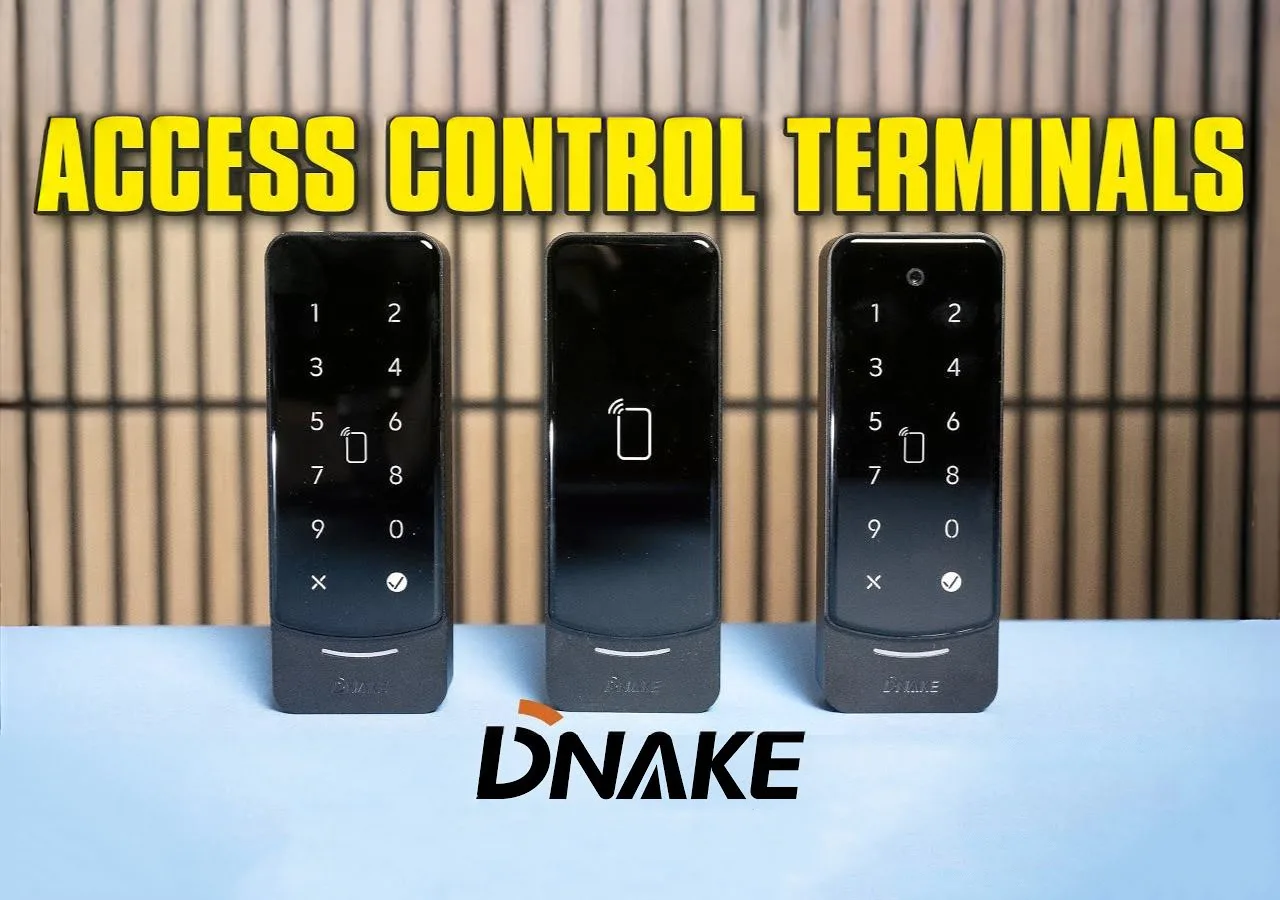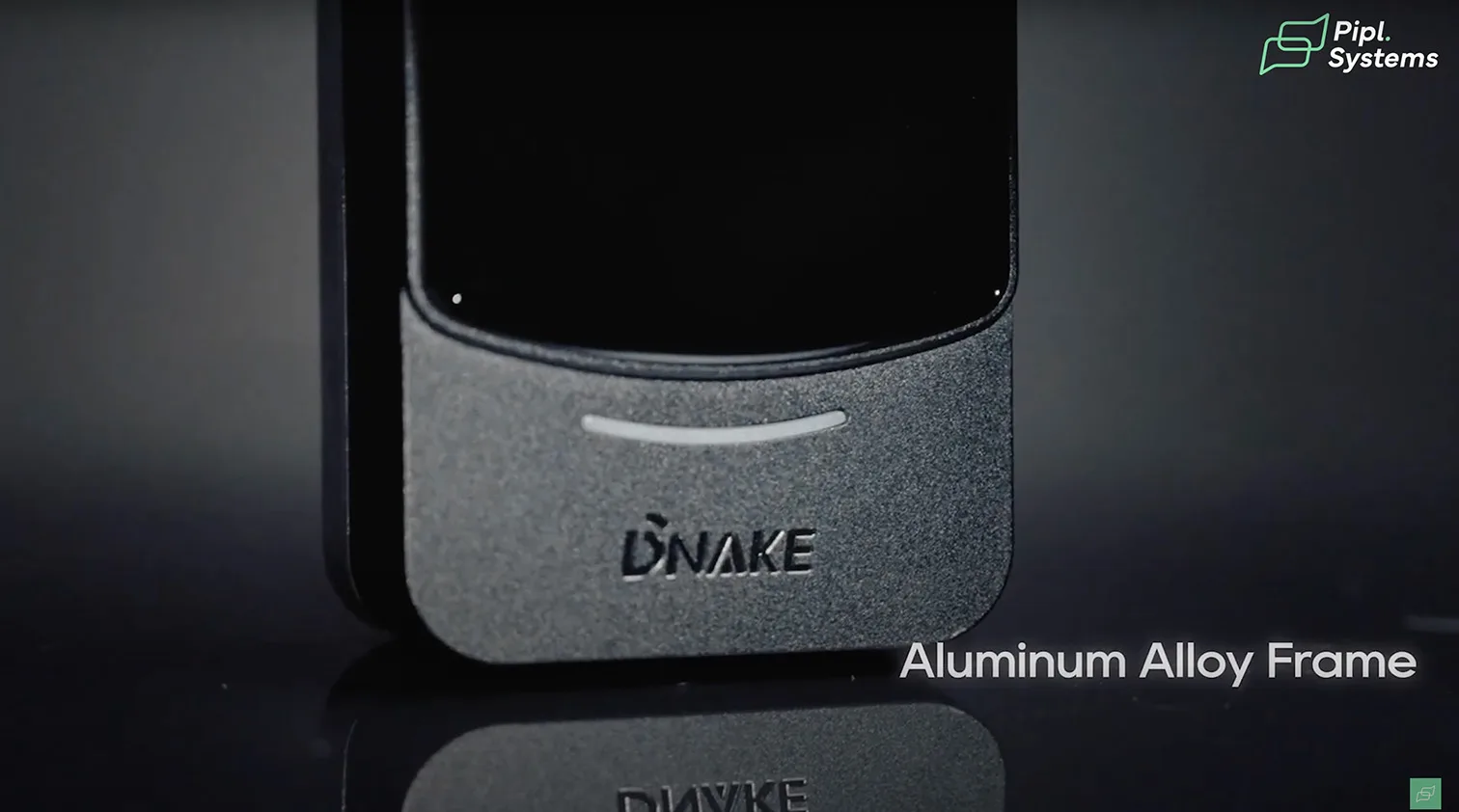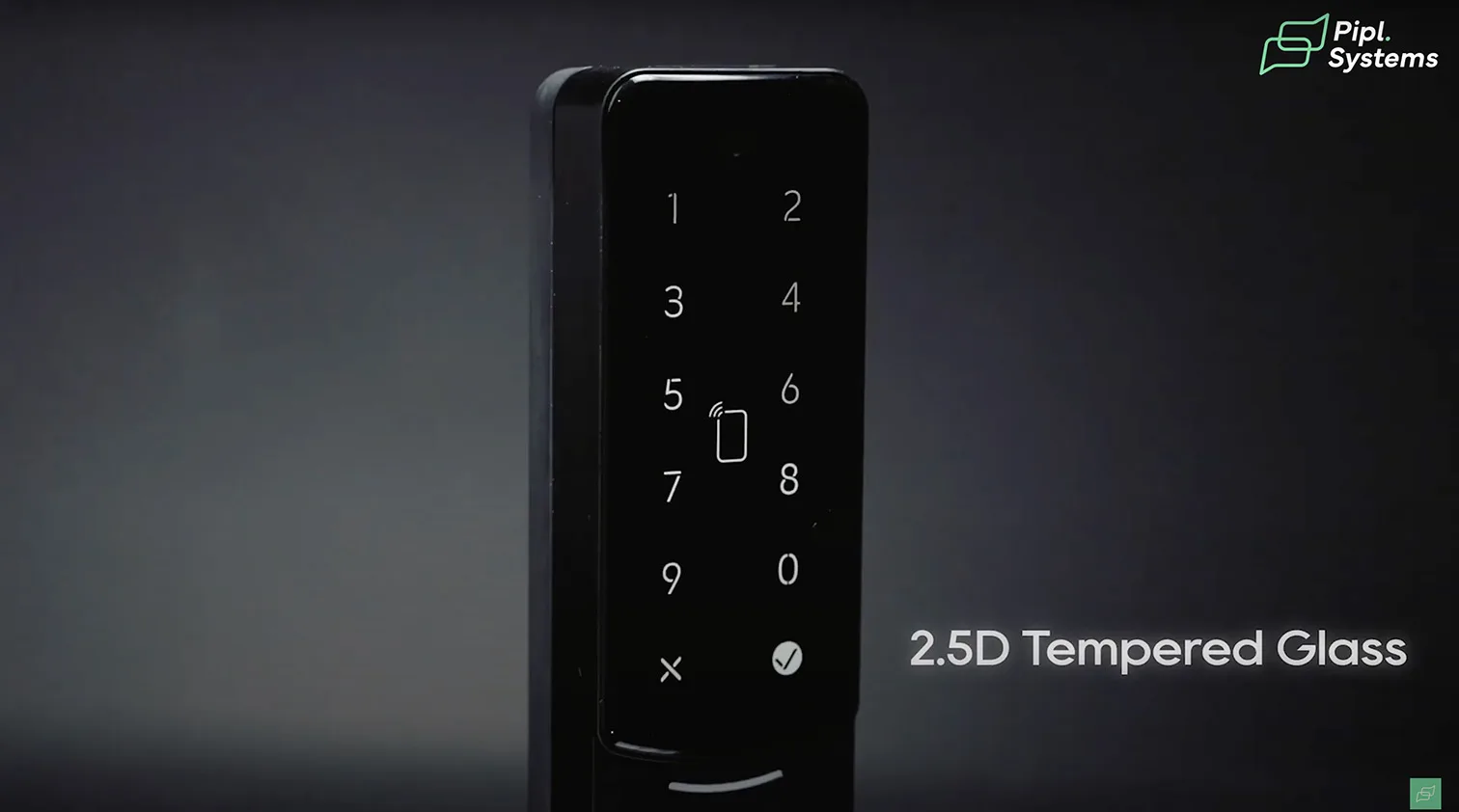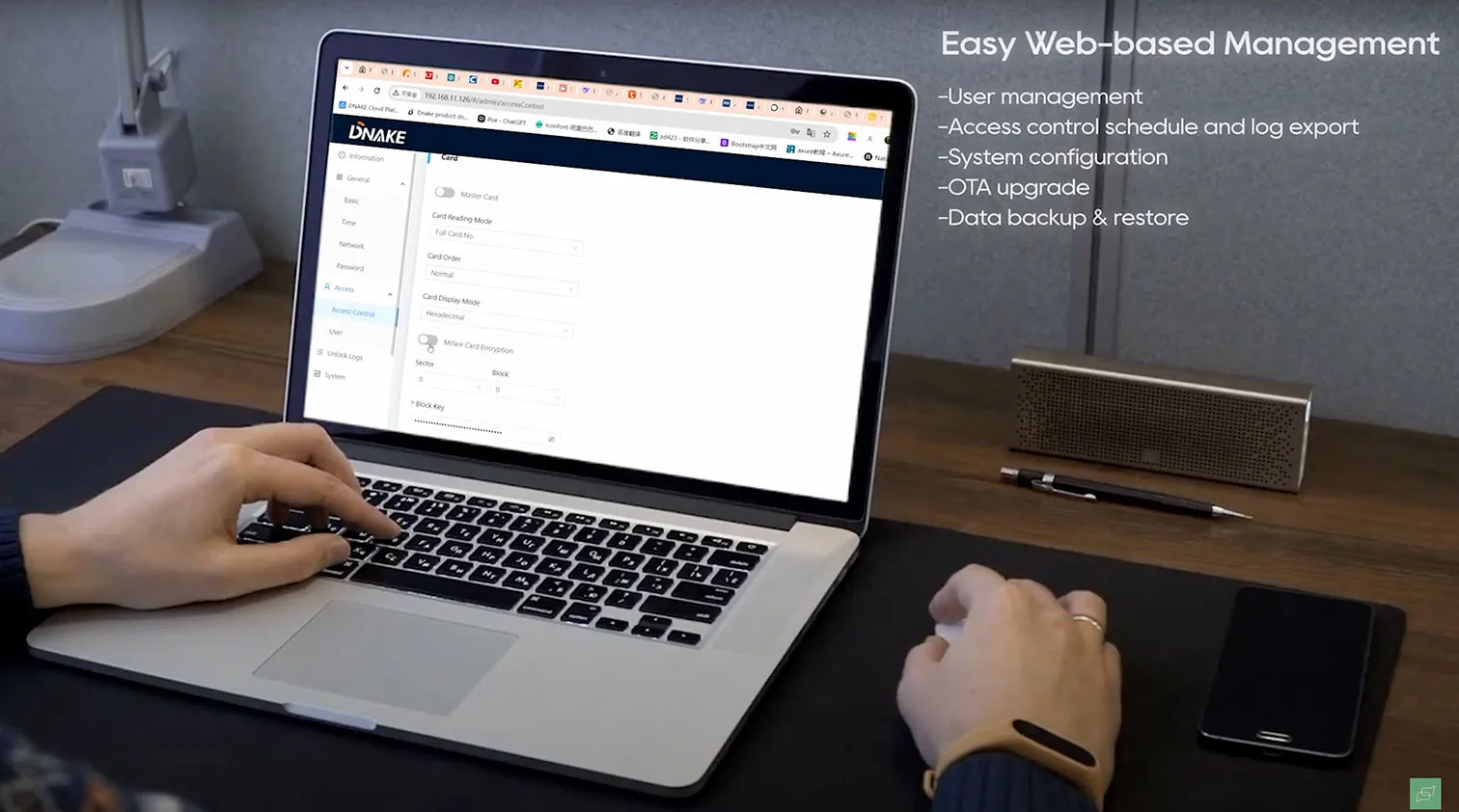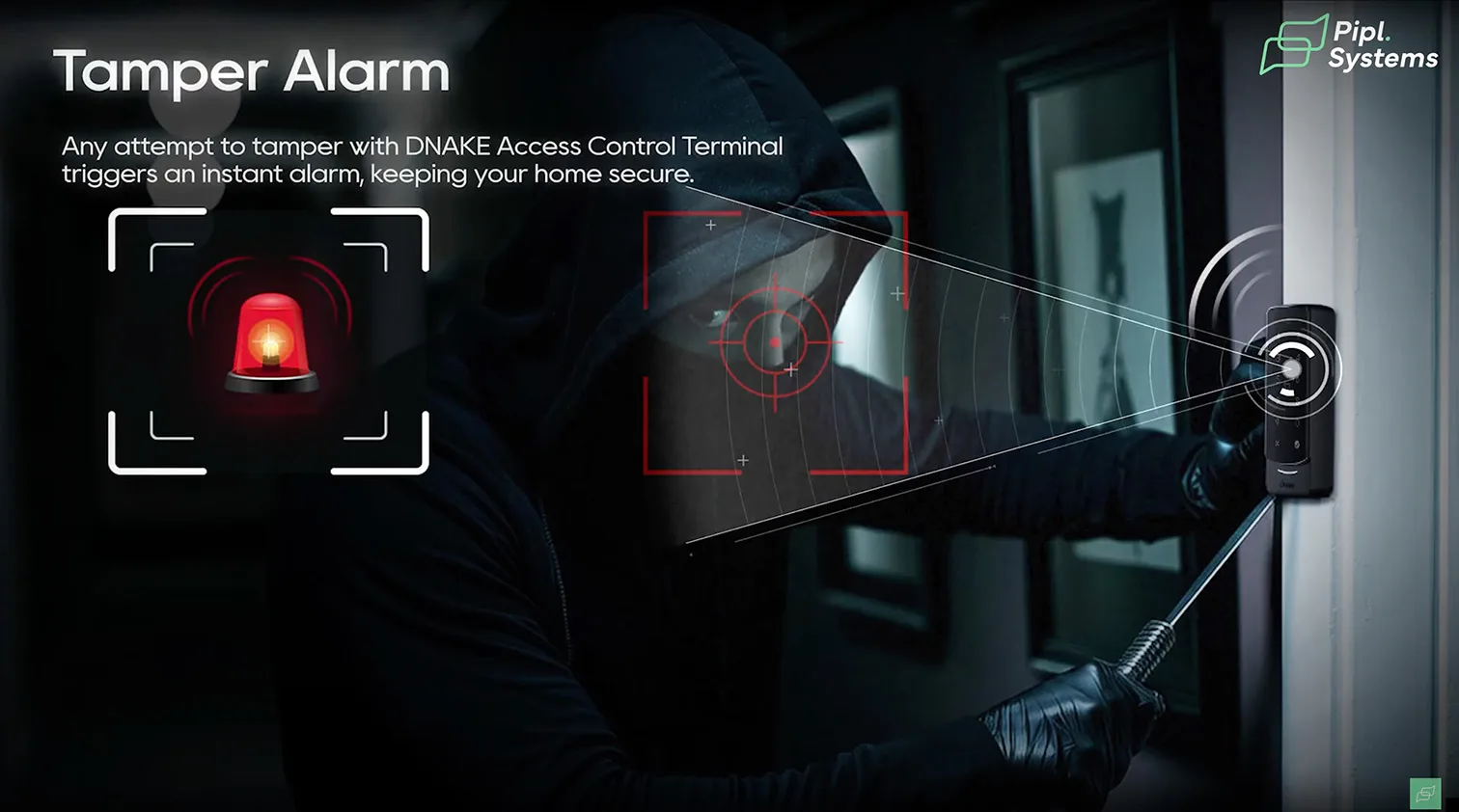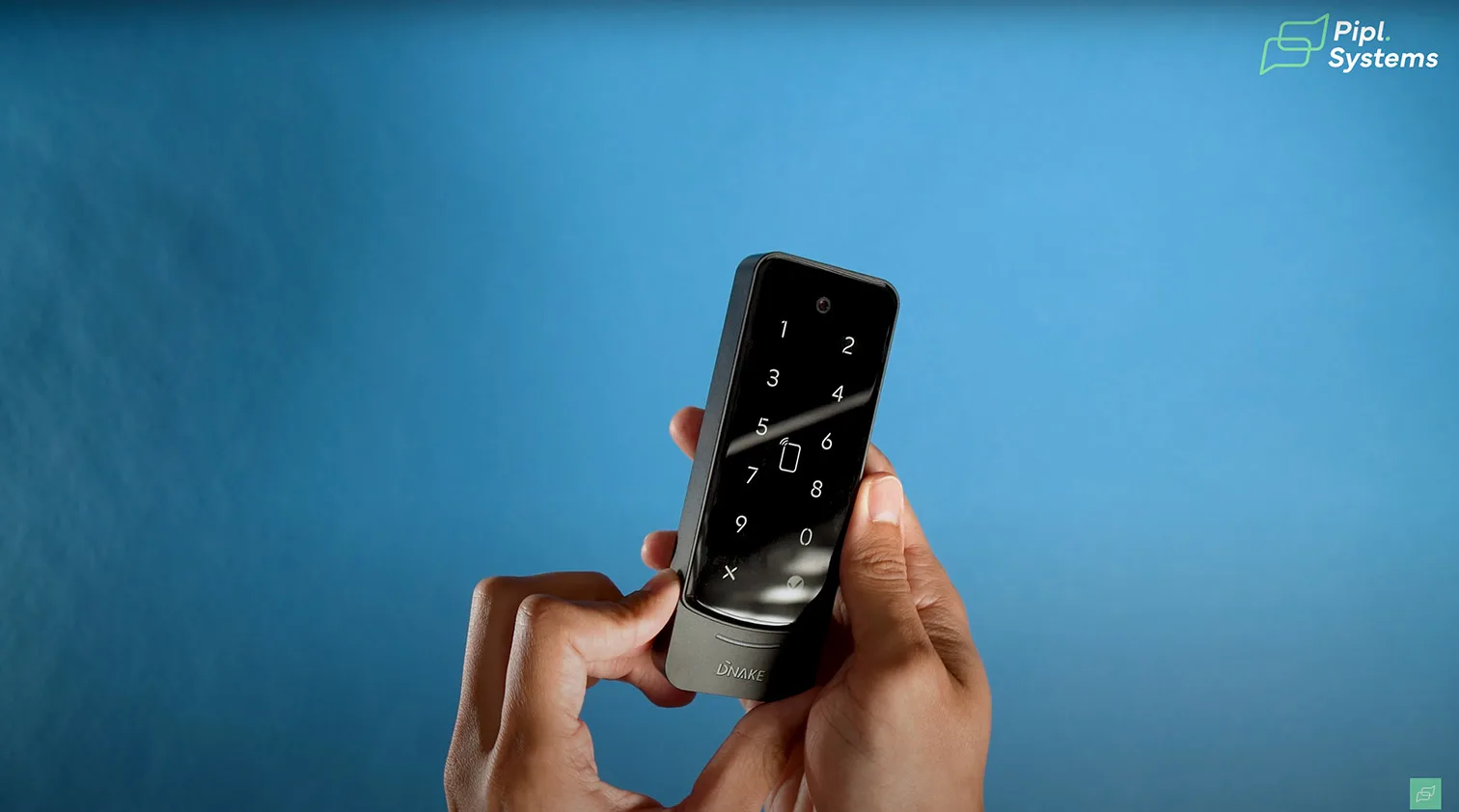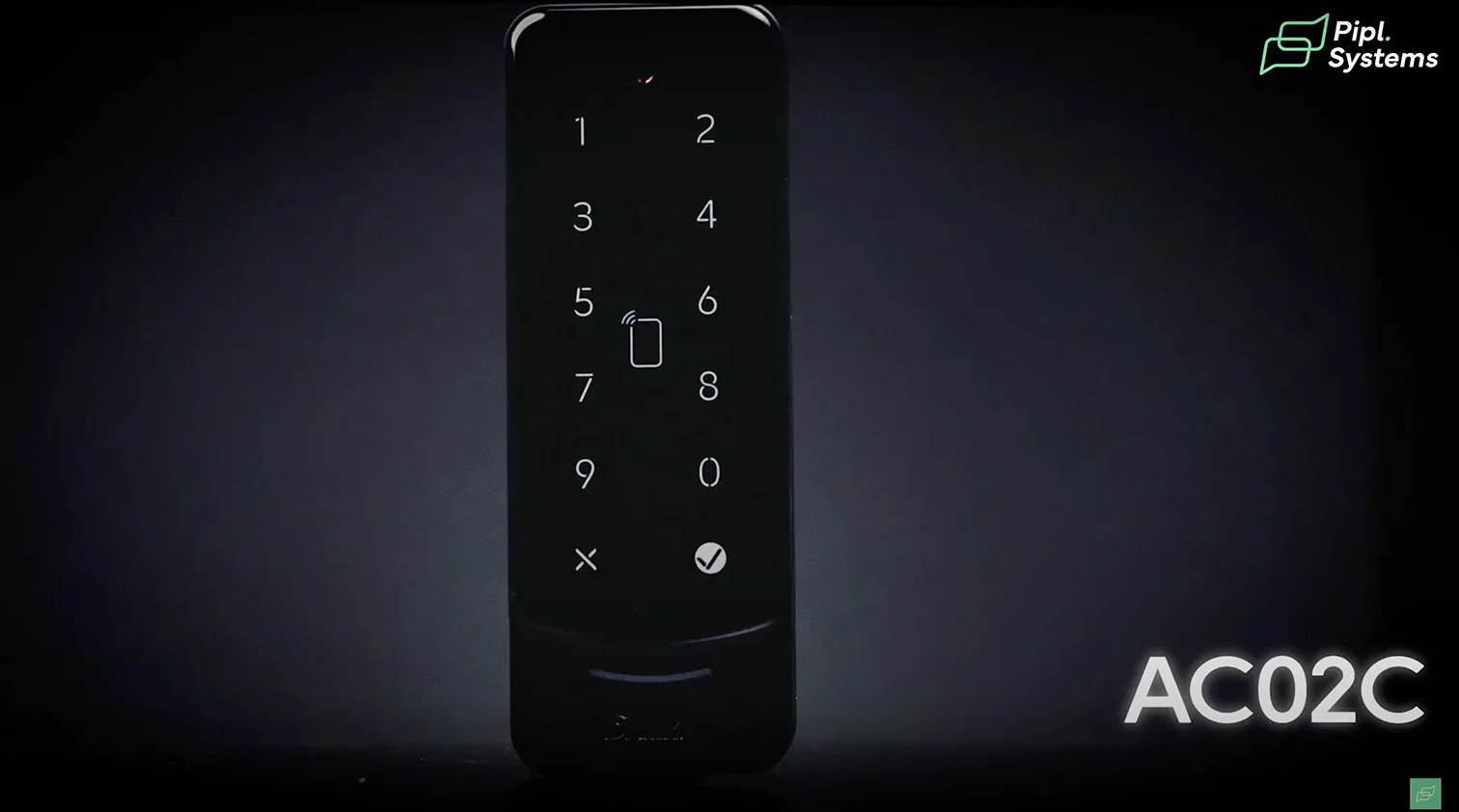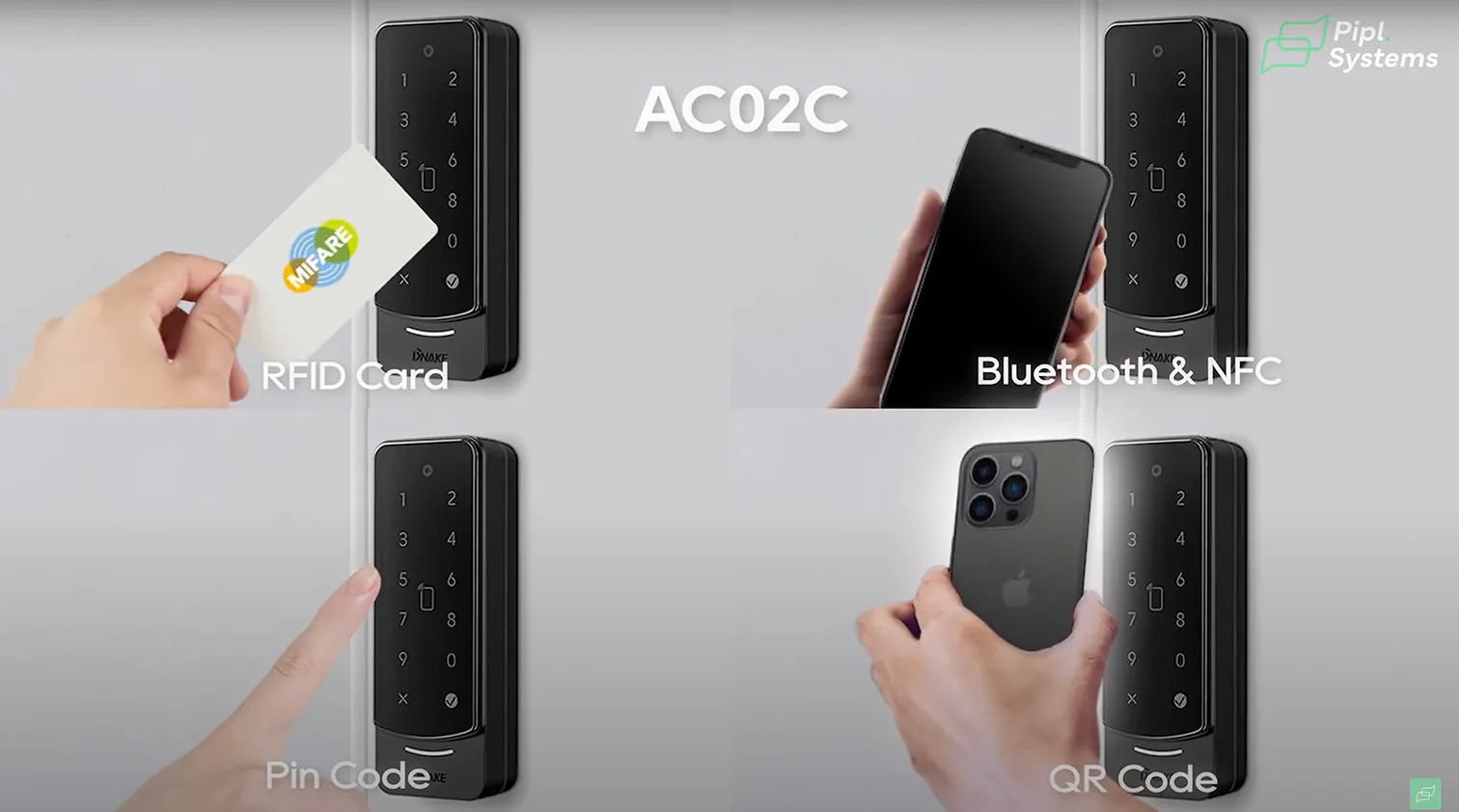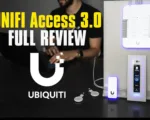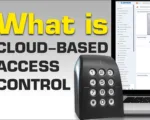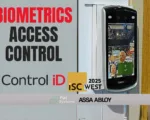There’s a certain moment during testing when a device just clicks. Not in the literal, mechanical sense, but when every part of the design and engineering aligns with what real customers actually need. That’s what happened when we got hands-on with the new line of Dnake access control terminals: the AC01, AC02, and AC02C.
These Dnake terminals aren’t just about opening doors. They represent a shift, bringing cloud-managed access control into environments where traditional multi-component systems are just too complex or expensive to justify. Think home offices, remote gates, small storefronts, or low-labor retrofits where every hour of installation counts.
What Dnake did here is simple but important: they combined the reader and the controller into a single all-in-one device. That’s not new in theory, but in practice, it’s surprisingly rare to find a product that does this well, with full PoE support, mobile unlocking, and real-time event logging baked in. Especially at this build quality.
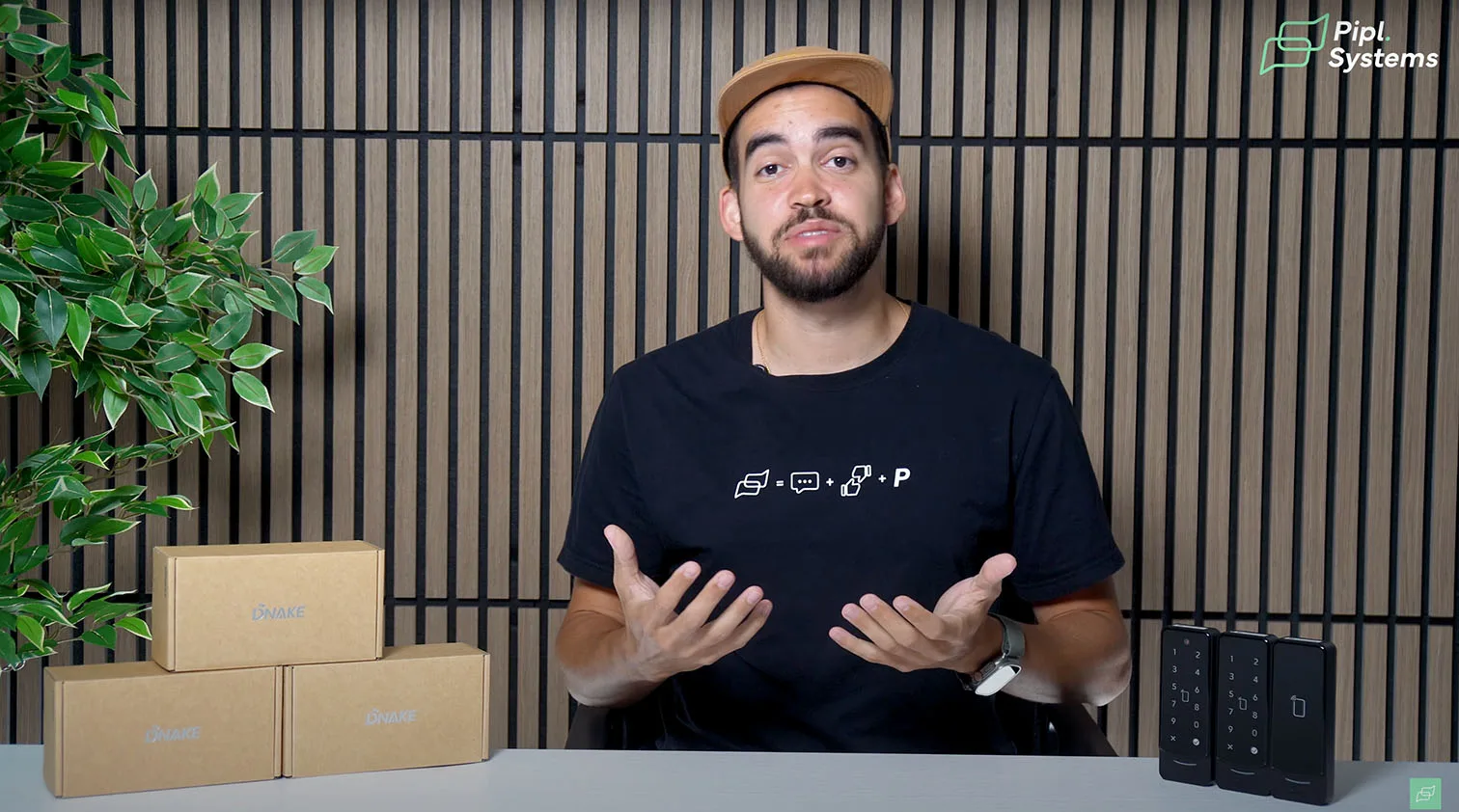
And it shows that Dnake isn’t just recycling intercom designs here. These models: AC01, AC02, and the camera-equipped AC02C, are cloud-first, compact, and surprisingly elegant. They’re made to solve real problems in the North American access control market: cost, complexity, and time to install.
So when we say this product line brings cloud-based access control to a broader user base, we mean it. It’s one of the few systems we’ve tested recently that actually lowers the bar for entry, without compromising on features like audit logs, encryption, or flexible authentication.
Why All-in-One Dnake Terminals Matter
Traditional Access Control Is Too Complex for Most Sites
The classic access control setup hasn’t changed much over the years: centralized controllers in an IT closet, dozens of wires running through the ceiling, multiple readers on each door, and a separate management interface. It works well in enterprise-grade buildings, but try putting that system into a converted garage, rural school, or independent retail shop. You’re either facing a massive wiring job or hiring a technician for something that should’ve taken an afternoon.
Reader and Controller in One Device
This is where Dnake flips the model. Each terminal is its own secure controller and reader combo. The logic sits inside the device, not in a separate box buried in a rack room. That means faster response times, no single point of failure across multiple doors, and lower latency on access attempts.
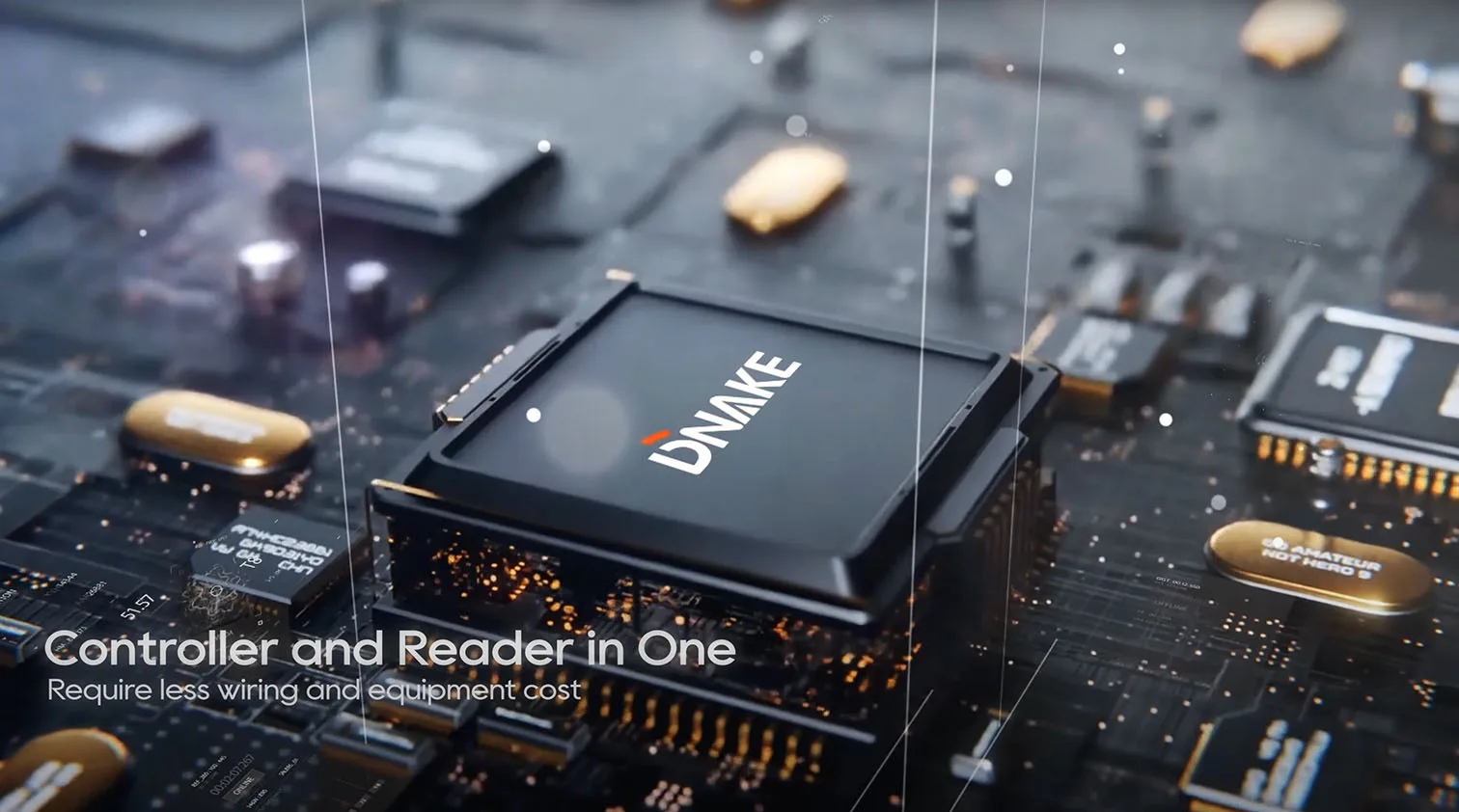
You tap your card or enter a PIN, and the door unlocks immediately, because there’s no back-and-forth with a central system. The credential is validated locally, which makes the whole experience feel snappy, especially if you’ve been stuck with laggy cloud platforms before.
A Better Fit for Remote Locations, Small Businesses, and Retrofits
This local intelligence also means you can treat each door as its own secure system. If one unit malfunctions, it doesn’t bring down the others. That’s huge in off-grid setups, farm buildings, stand-alone storage facilities, or franchise retail with limited IT support. You’re no longer relying on one failure-prone controller to manage an entire branch’s access.
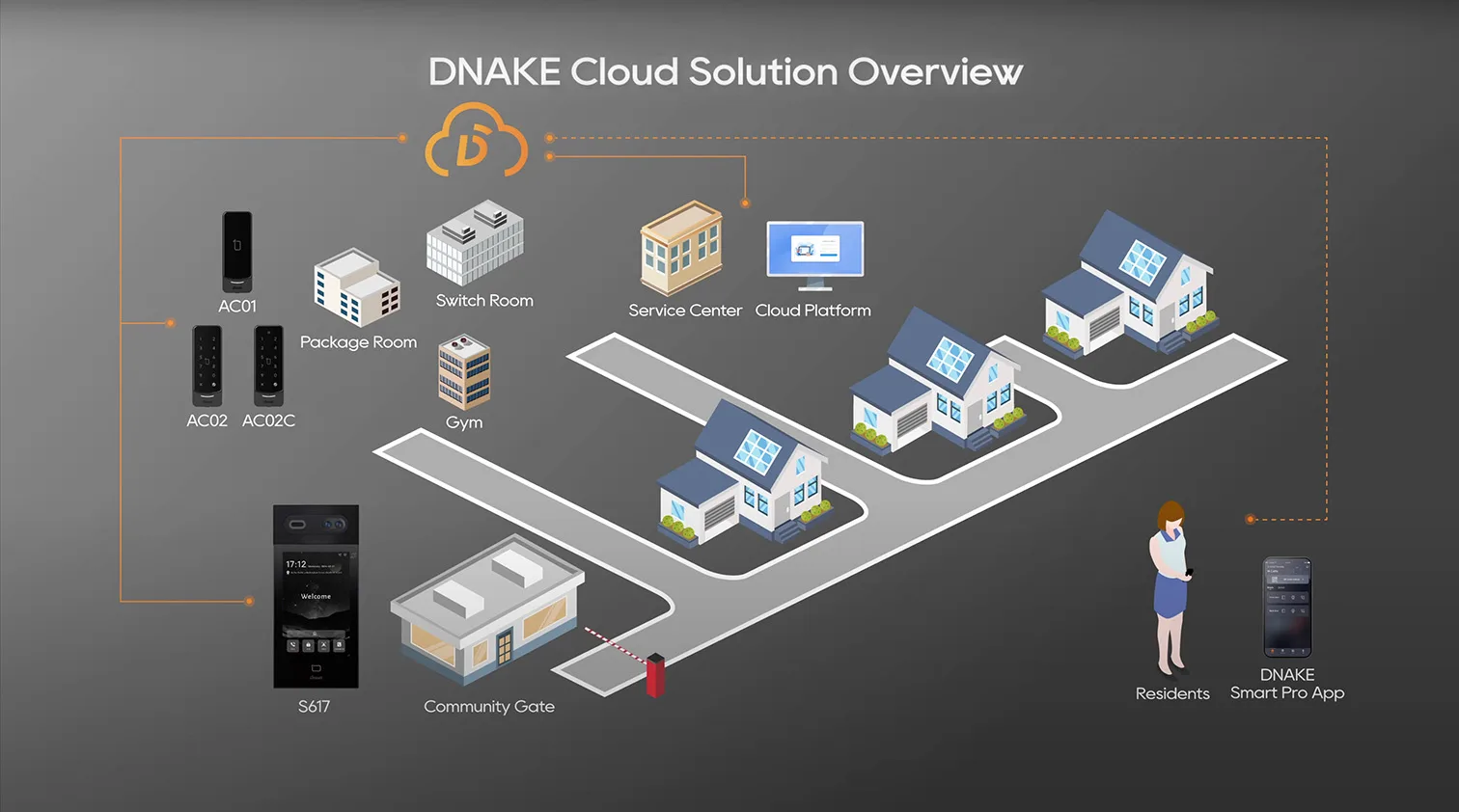
It also simplifies retrofits. If you’re replacing an old push-button lock or mechanical reader, this is a plug-and-protect situation. Mount the terminal, run PoE or 12V DC power, and connect it to the Dnake cloud. The total install time, including user setup and permissions, is usually under an hour.
Flexible Power and Mounting Options
All three Dnake terminals support Power over Ethernet (PoE) as well as standard 12V DC input, depending on what’s already in place. This matters. If you’re already running IP security cameras on a PoE switch, adding access control becomes a one-cable install. No electrician needed.
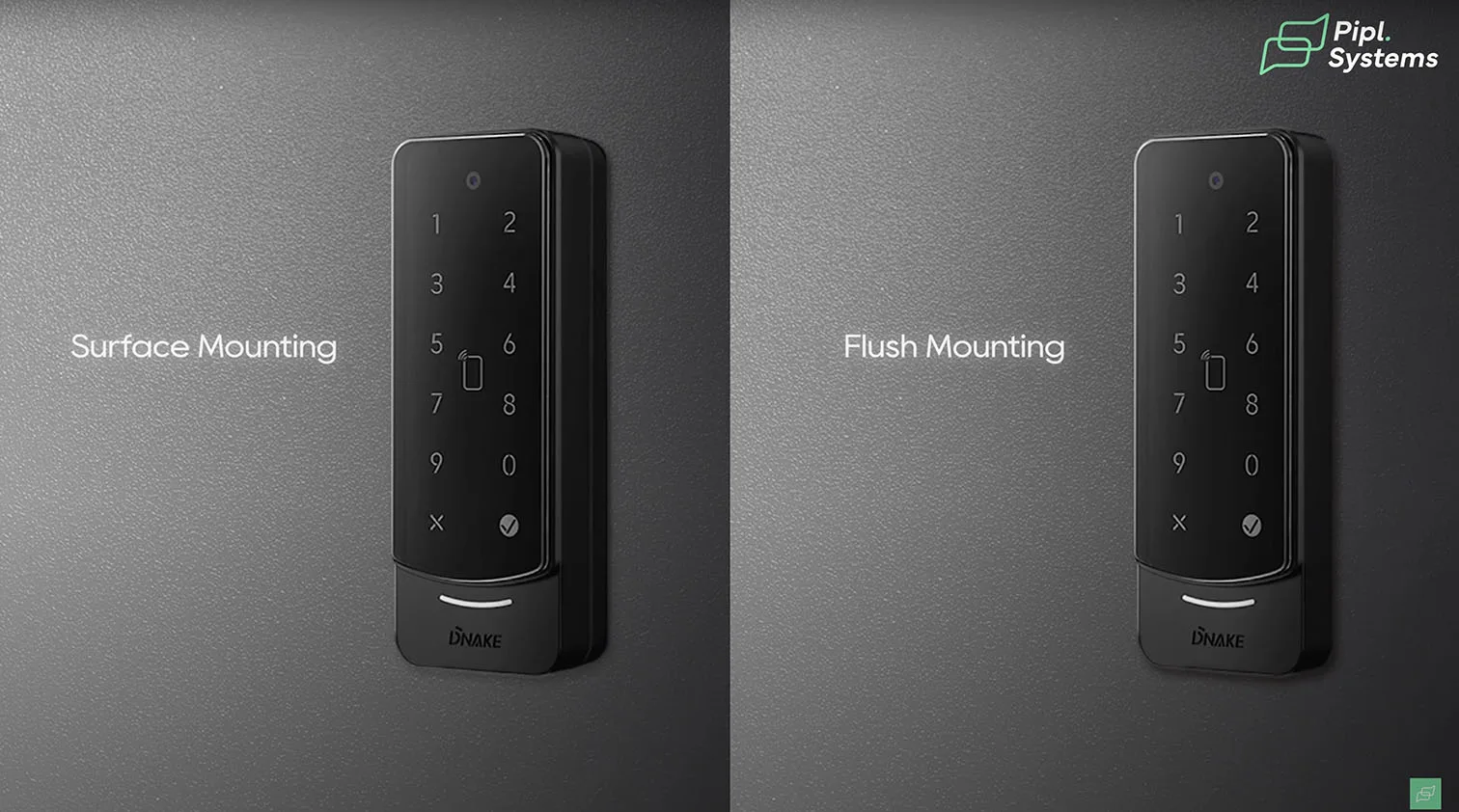
They also support surface mount and flush mount configurations. That may sound minor, but on the job site, it can be the difference between needing custom hardware or using the wall as-is. These design details reflect a deeper awareness of how access systems are actually deployed, not just designed in CAD.
Build and Core Features
Unified Specs Across the Line
There’s something satisfying about testing three different devices that all feel like they come from the same engineering DNA. That’s exactly the case with the Dnake AC01, AC02, and AC02C terminals. Despite serving different use cases, they share a consistent foundation that makes deployment and scaling across multiple entrances feel effortless.
All three models feature a slim 50mm profile, ideal for tight door frames or retrofit installs where space is a constraint. The front panel is crafted from 2.5D tempered glass, while the housing is made of aluminum alloy – a combination that gives these units a clean, industrial finish while withstanding real-world abuse. With IP65 and IK08 ratings, they’re ready for harsh environments, including exterior gates and unheated industrial entries.
In our testing at Pipl Systems, that ruggedness came through. We mounted one AC02 unit on an exterior metal door exposed to direct sun, dust, and occasional rain, and it performed with zero degradation over several weeks of operation.
What’s inside is equally capable:
- Tamper alarm built into the casing
- Built-in relay output for direct lock control
- 60,000 RFID card capacity
- 100,000-event storage buffer, logged locally and to the cloud
- Managed via the DNAKE Smart Pro APP, with real-time sync and OTA updates
- Powered by PoE or 12V DC, so installation adapts to whatever infrastructure is already present
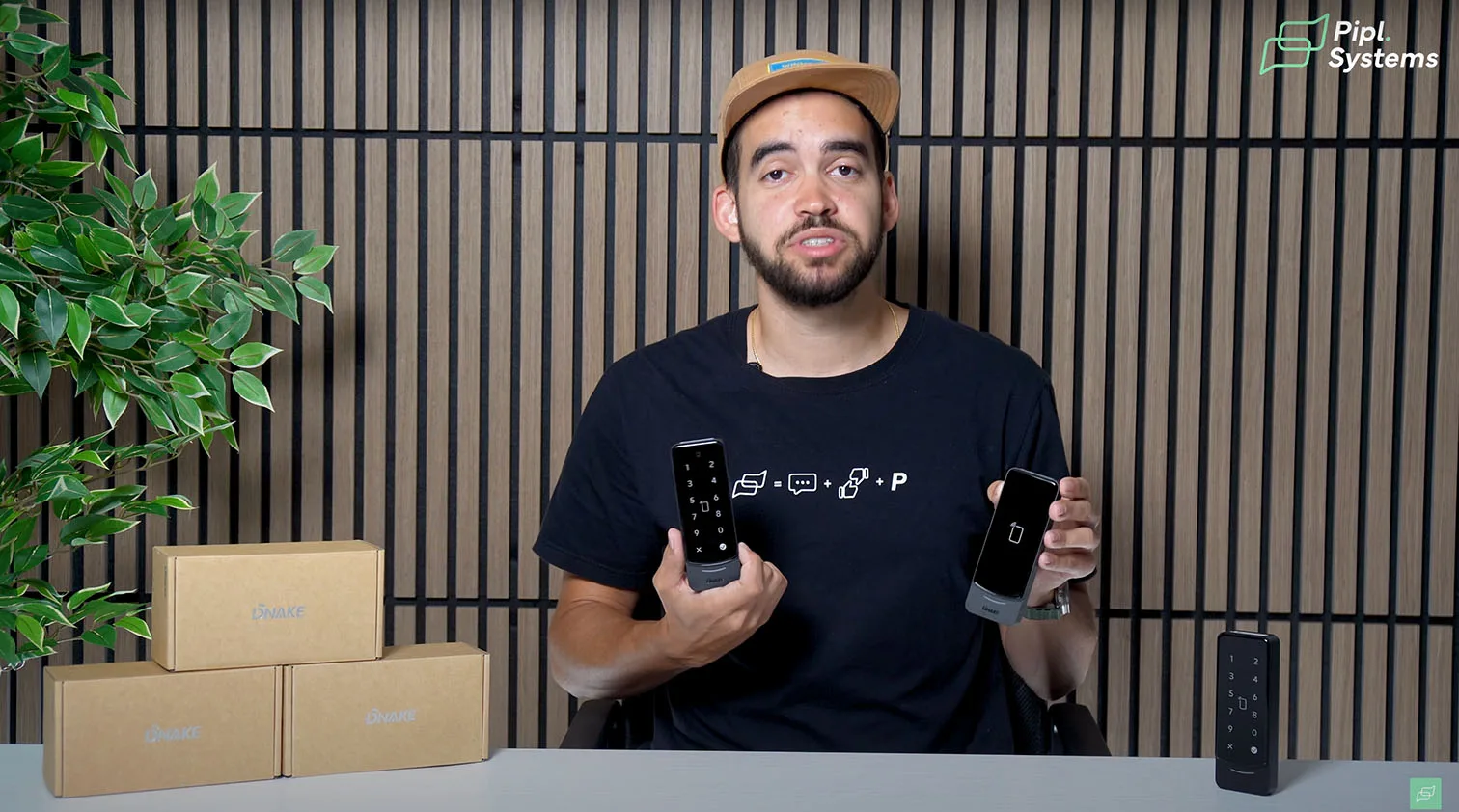
It’s rare to see this much consistency across a product line. It shows Dnake’s intent to make system design more predictable for integrators and property managers alike.
Communication & Compatibility
When it comes to integration and compatibility, Dnake didn’t cut corners. All three access control terminals support Wiegand and RS-485, which opens them up to work alongside existing panels or third-party systems if needed. That’s a small checkbox in spec sheets, but a big deal on job sites where hybrid systems are common.
Credential flexibility is another strong point. Each device supports:
- RFID cards (13.56 MHz and 125 kHz)
- MIFARE encrypted cards (Plus SL1/SL3)
- NFC for tap-based mobile access
- Bluetooth, including proximity or shake-to-unlock modes
- And, in the case of AC02 and AC02C, full PIN pad entry
The flagship AC02C goes a step further by integrating a 2MP HD camera and supporting QR code scanning. In the studio, we tested mobile visitor credentials by generating a time-limited QR on the DNAKE Smart Life APP and scanning it at the terminal. The response was immediate, and most importantly, the image was logged and stored with the event for later review.
This kind of unified design – RFID, Bluetooth, PIN, QR, camera – offers flexible access for teams, guests, and even family members without requiring separate hardware at each entrance.
For a closer look at DNAKE’s latest innovations in intercom and access control—from all-in-one touch panels to modular outdoor stations—don’t miss our detailed article DNAKE Intercom Systems at ISC West 2025: Exclusive Insights and Full Product Guide. We explore how these solutions are tailored for modern multi-family and commercial deployments, with live visuals and expert breakdowns. Prefer to see the tech in action? Watch our full ISC West 2025 walkthrough on YouTube:
Model Comparison: AC01 vs AC02 vs AC02C
While all three Dnake access control terminals: AC01, AC02, and AC02C – share the same compact form factor and cloud-first approach, their feature sets are designed to suit different levels of security needs. Whether you’re outfitting a standard door, managing an office entrance with multiple staff members, or logging visitors with photo verification, there’s a model purpose-built for the job.
Below is a detailed side-by-side breakdown of their core capabilities:
| Feature | AC01 | AC02 | AC02C |
|---|---|---|---|
| Housing Material | Aluminum + 2.5D Glass | Aluminum + 2.5D Glass | Aluminum + 2.5D Glass |
| Width | 50 mm (slim profile) | 50 mm (slim profile) | 50 mm (slim profile) |
| IP/IK Rating | IP65, IK08 | IP65, IK08 | IP65, IK08 |
| RFID Unlock | ✅ | ✅ | ✅ |
| PIN Code Unlock | ❌ | ✅ | ✅ |
| QR Code Unlock | ❌ | ❌ | ✅ |
| NFC Support | ✅ | ✅ | ✅ |
| Bluetooth Unlock | ✅ | ✅ | ✅ |
| Mobile App Unlock (DNAKE Apps) | ✅ | ✅ | ✅ |
| Camera | ❌ | ❌ | ✅ (2MP with image logging) |
| Cloud Configuration | ✅ | ✅ | ✅ |
| Local Wiegand + RS-485 Support | ✅ | ✅ | ✅ |
| Storage Capacity | 60,000 cards, 100,000 logs | 60,000 cards, 100,000 logs | 60,000 cards, 100,000 logs |
| Power Options | PoE or DC 12V | PoE or DC 12V | PoE or DC 12V |
| Tamper Alarm | ✅ | ✅ | ✅ |
| Mounting Options | Surface & Flush | Surface & Flush | Surface & Flush |
| Best Use Case | Basic Door Access | Office Entrances | Visitor-Logged Entry Points |
All three models also feature the now-signature Dnake smile-shaped LED bar at the base of each terminal. This subtle curve adds a warm, human-centered design element to an otherwise functional device, welcoming users with a visual cue that access has been granted. It’s a minor detail, but one that reflects Dnake’s attention to user experience across its hardware.
To see how these terminals connect to Dnake’s broader smart ecosystem, including video intercoms, remote door stations, and unified building management, check out our in-depth platform analysis in this full article on Dnake’s all-in-one cloud access control platform. You’ll find how these access devices integrate natively with Dnake’s software environment, including centralized role management, audit logs, and mobile provisioning.
By using cloud platforms, managing systems like video intercoms and access control terminals has never been easier.
Real-World Demo Highlights
Fast, Reliable Multi-Method Entry
One of the biggest takeaways from our in-studio testing at Pipl Systems was how fluid and responsive the Dnake access control terminals feel during actual use. These aren’t just spec-heavy devices; they’re built to perform fast and clean in real environments, whether it’s a residential lobby, a private office, or a commercial entry point.
When we ran through multiple scenarios with the AC01, AC02, and AC02C, response times were near-instant. PIN entry registered with zero lag, Bluetooth unlock worked from both phone and Apple Watch, and the mobile app: DNAKE Smart Pro – delivered seamless access even over a weak network.
QR Guest Access That Just Works
QR code entry, especially useful for visitor access, was intuitive and fast. Once scanned, the terminal logged the user, synced the data to the cloud, and displayed a timestamped entry in the dashboard logbook. You can also pre-generate temporary passes and send them directly through the app.
Visual Confirmation and LED Design Cues
Each terminal displays clear red or green LED lights to confirm access decisions—simple but essential for everyday users. The smile-shaped LED bar serves not only as a signature design touch but also doubles as an intuitive access signal, giving reassurance in shared or unfamiliar spaces.
On-the-Spot Visual Logging with AC02C
What stood out on the AC02C was its camera-enabled logging. Every QR or NFC interaction triggered an image capture, which was instantly tied to that user’s event history. This kind of forensic recordkeeping is typically reserved for higher-end enterprise systems. But here, it’s built into a device that mounts in under 10 minutes.
Full Remote Oversight via Cloud Platform
Behind the scenes, all of this is synced through Dnake’s cloud portal. Every access attempt, successful or not, is time-stamped and remotely viewable in the app. That means admins can audit entries without being on-site and even push remote updates to permissions in seconds.
Real-World Confidence
These details might seem small, but in daily use, they make a significant difference. You don’t want to second-guess if a door opened. You want immediate, reliable feedback, and these Dnake terminals deliver. Whether you’re managing three users or three hundred, the speed and clarity of the system matter. And in our real-world walkthroughs, it never missed.
Who Should Use Dnake Terminals?
Dnake access control terminals aren’t just for high-rise residential towers. We tested the AC01, AC02, and AC02C in our studio and quickly saw how well they fit into smaller-scale deployments that still demand reliability.
Perfect Fit for Everyday Use
These terminals are ideal for residential garages, front gates, and personal office doors where convenience and durability matter. If you manage a small clinic, a co-working space, or a service entrance that needs layered access without breaking the budget, these devices offer a straightforward solution.
The form factor is slim enough for narrow door frames, while the build quality, IP65 and IK08 rated, holds up outdoors. From our real-world testing, QR and Bluetooth entry worked seamlessly even on remote sites with limited infrastructure.
Resilient, Decentralized Design
Each terminal operates independently. That means if one unit fails or loses connection, others remain operational. This distributed intelligence lowers the risk of single points of failure, a big win for small teams without dedicated IT support.
Dnake’s system also works well for users upgrading from older wired setups. You don’t need a separate controller, and cloud-based management cuts down on on-site reconfiguration. The learning curve is shallow, even for those new to access control.
This makes Dnake terminals a practical step up from basic intercoms. In fact, if you’re weighing whether to pair your entry system with video, we’ve covered the decision-making process in our article on the best home intercom systems, including insights from real deployments. A video viewing version is also available:
Pros and Cons of DNAKE’s Approach
After working with dozens of access systems, our testing team at Pipl Systems appreciated how Dnake strikes a balance between simplicity, cloud flexibility, and modern user access methods.
Key Advantages
First off, everything you need is in one unit. The controller, reader, and relays are built into the same device, which reduces wiring, speeds up installation, and simplifies troubleshooting.
These terminals support encrypted RFID cards, PINs, NFC, QR codes, and Bluetooth—giving users multiple access options based on their habits or device preferences. You don’t need to train every visitor or staff member; they’ll intuitively use the method that suits them best.
Cloud-based management via the DNAKE Smart Pro APP is another major win. Admins can modify access remotely, check logs in real time, and push firmware updates without being on site. You don’t need to run a local server either: the devices handle up to 60,000 RFID cards and log 100,000 events internally.
If you’re switching from an outdated door controller or panel-based system, Dnake offers a clear upgrade path. You can keep the wiring, replace old readers, and instantly gain mobile and QR access support.
For those planning an integrated intercom and access control solution, we broke down the transition process in our article on how to choose a home intercom system based on real project rollouts. We also have a video on this topic:
Limitations
Of course, Dnake’s platform has some boundaries. You won’t find facial recognition built into these models yet, which may be a drawback for high-security or high-throughput installations.
Video/photo logging is only available on the AC02C, which includes a 2MP camera. If you’re deploying access points that need visual confirmation, you’ll need to plan accordingly.
Finally, while Dnake’s ecosystem works well out of the box, integration with non-Dnake systems may require bridging solutions or third-party software like Home Assistant. It’s not a dealbreaker, but it does require more planning if you’re building a hybrid stack.
Final Thoughts, Dnake Access Control Review
After testing the AC01, AC02, and AC02C in our lab setups and real-world access points, we’re confident these terminals meet the access control demands of modern homes and small commercial facilities. You won’t need to overbuild your system or invest in extra infrastructure just to get flexible, smart entry features.
These Dnake terminals shine in locations where you need compact design, reliability in outdoor conditions, and a cloud-based interface for remote management. Whether you’re replacing an old wired reader or setting up access control from scratch, the transition is fast and surprisingly smooth.
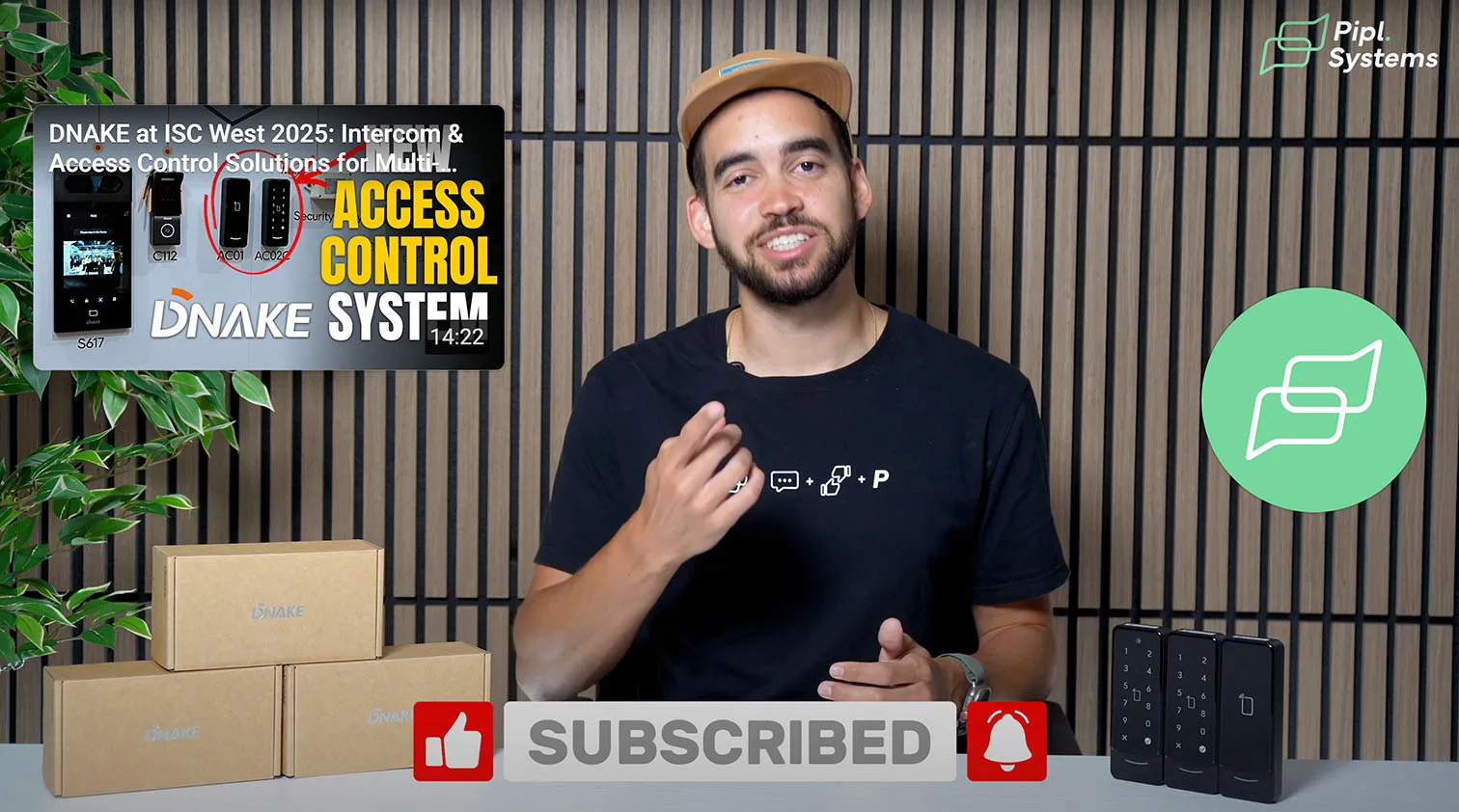
For standard use cases like garage entry, internal office doors, or even coworking environments, the AC01 and AC02 get the job done. If you’re dealing with guest entries, shared staff points, or any scenario where visual audit trails matter, AC02C is the obvious choice thanks to its built-in camera and logbook integration.
From our point of view, Dnake has made access control affordable, scalable, and future-ready without losing sight of aesthetics. These terminals look good on the wall, respond fast, and handle day-to-day access management with minimal friction.
In short: affordable, smart, scalable, and design-conscious: a rare combination in the access control market.
FAQ, Dnake Access Control Terminals
What is Dnake access control, and how does it work?
Dnake access control combines RFID readers, control relays, and cloud-based management into a single device. Instead of wiring separate controllers and readers, each terminal functions independently and connects to the DNAKE Smart Pro APP for remote setup, monitoring, and access tracking.
Can I use my phone to unlock doors with Dnake terminals?
Yes, you can unlock doors using Bluetooth, NFC, or QR codes via the DNAKE Smart Pro APP. Some models even support shake-to-unlock and Apple Watch integration for added convenience.
Which app do I need, DNAKE Smart Pro or Smart Life?
Use DNAKE Smart Pro for system configuration, remote access logs, and firmware updates. The Smart Life app is geared toward broader smart home integration, but access control features are managed through Smart Pro.

How many users and cards can Dnake store?
Each Dnake terminal stores up to 60,000 RFID cards and 100,000 log events. This makes them well-suited for multi-user sites like shared buildings, small offices, or gated communities.
What’s the difference between AC01, AC02, and AC02C?
All three share the same build quality and core access features, but AC02 adds a PIN pad, while AC02C introduces a 2MP camera and QR code support. If you need visual logs or guest access management, go with AC02C.
Can I use Dnake access control for my residential gate?
Absolutely. With IP65 and IK08 ratings, these terminals are ready for outdoor use. They’re compact enough for gate posts and support power via PoE or 12V DC, making installation easy in most residential setups.
